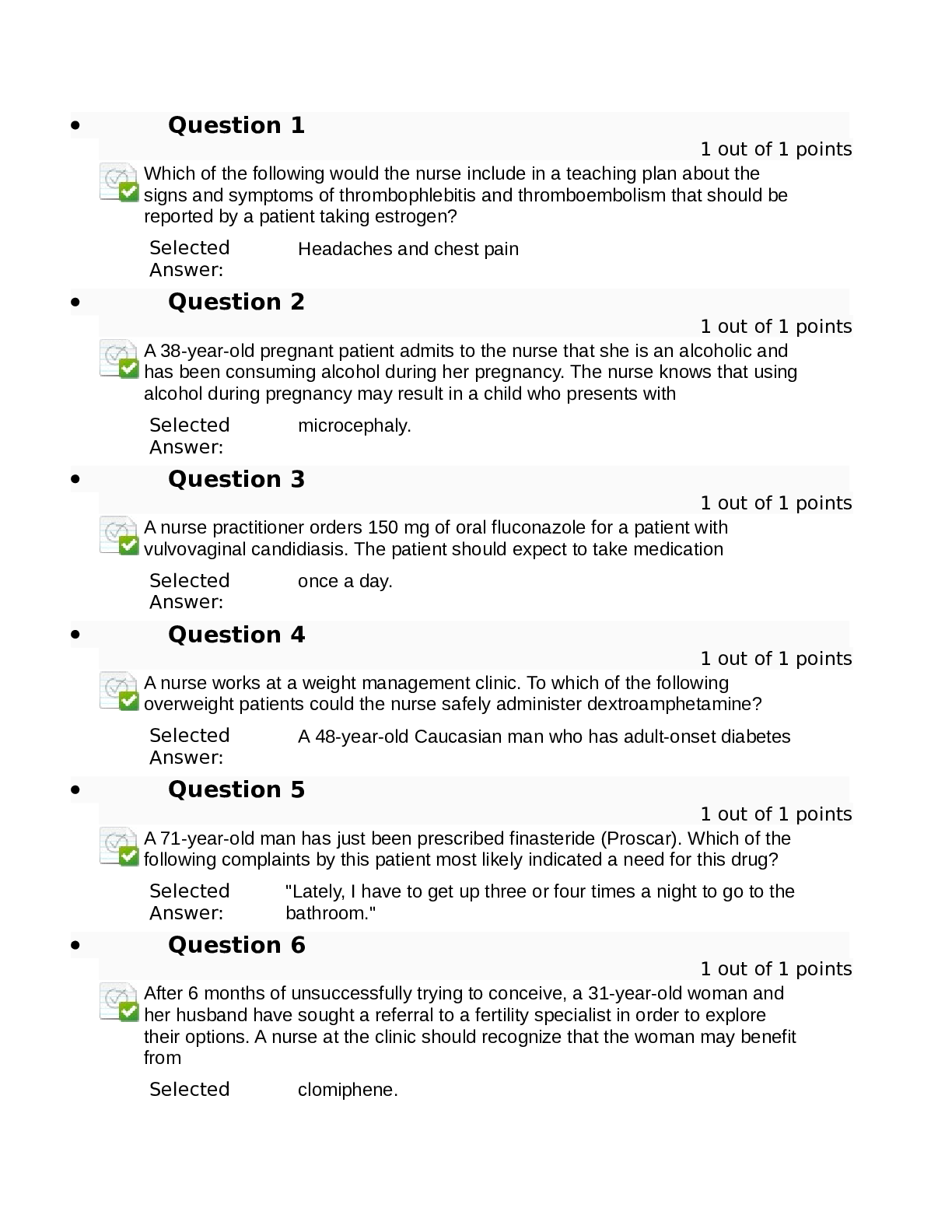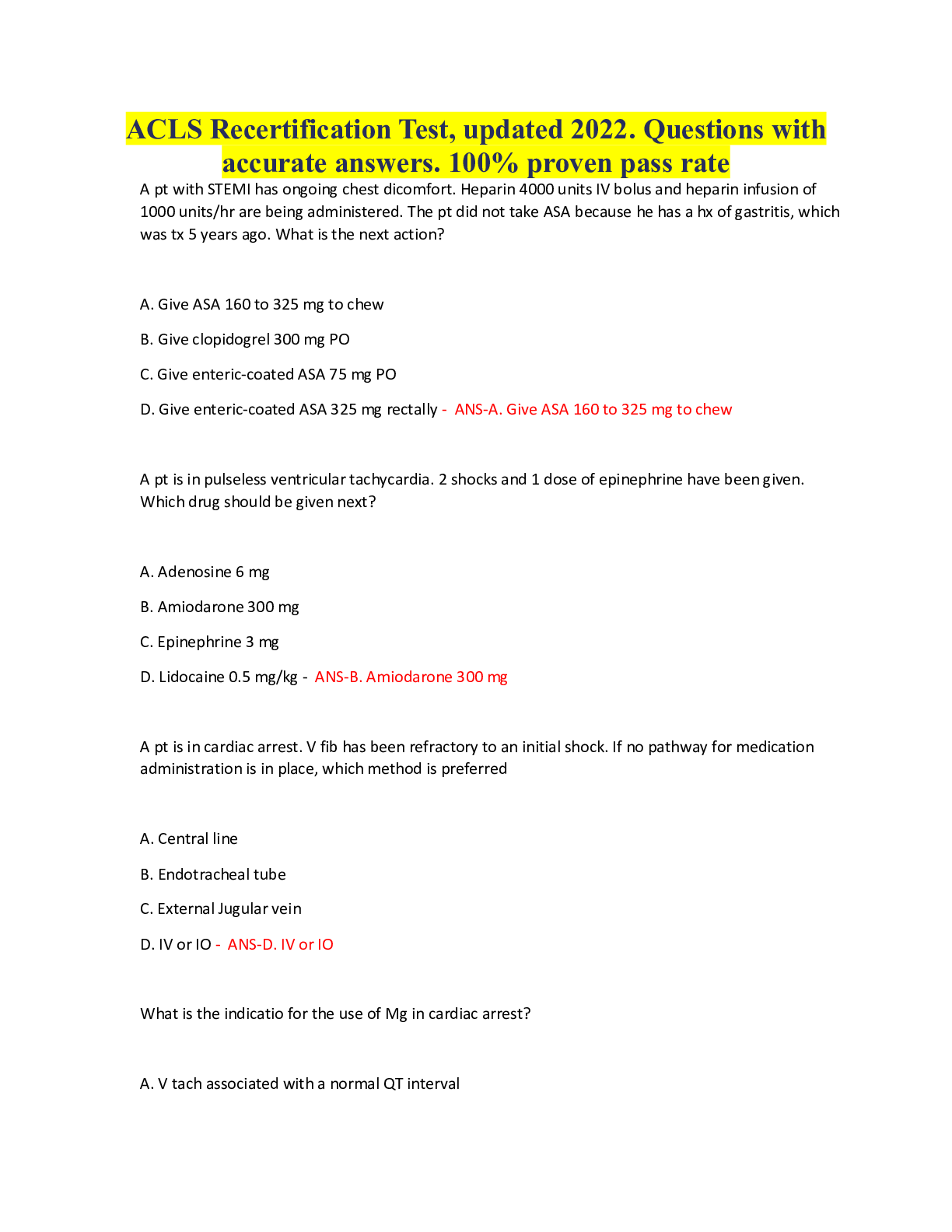*NURSING > QUESTIONS & ANSWERS > Chapter 02: Pharmacologic Principles, Multiple questions with answers, 100% proven pass rate. (All)
Chapter 02: Pharmacologic Principles, Multiple questions with answers, 100% proven pass rate.
Document Content and Description Below
The patient is receiving two different drugs. At current dosages and dosage forms, both drugs are absorbed into the circulation in identical amounts. Which term is used to identify this principle? a... . Bioequivalent b. Synergistic c. Prodrugs d. Steady state ANS: A Two drugs absorbed into the circulation in the same amount (in specific dosage forms) have the same bioavailability; thus, they are bioequivalent. A drug’s steady state is the physiologic state in which the amount of drug removed via elimination is equal to the amount of drug absorbed from each dose. The term synergistic refers to two drugs, given together, with a resulting effect that is greater than the sum of the effects of each drug given alone. A prodrug is an inactive drug dosage form that is converted to an active metabolite by various biochemical reactions once it is inside the body. 2. When given an intravenous medication, the patient says to the nurse, “I usually take pills. Why does this medication have to be given in the arm?” What is the nurse’s best answer? a. “The medication will cause fewer adverse effects when given intravenously.” b. “The intravenous medication will have delayed absorption into the body’s tissues.” c. “The action of the medication will begin sooner when given intravenously.” d. “There is a lower chance of allergic reactions when drugs are given intravenously.” ANS: C An intravenous (IV) injection provides the fastest route of absorption. The IV route does not affect the number of adverse effects, nor does it cause delayed tissue absorption (it results in faster absorption). The IV route does not affect the number of allergic reactions. 3. The nurse is administering parenteral drugs. Which statement is true regarding parenteral drugs? a. Parenteral drugs bypass the first-pass effect. b. Absorption of parenteral drugs is affected by reduced blood flow to the stomach. c. Absorption of parenteral drugs is faster when the stomach is empty. d. Parenteral drugs exert their effects while circulating in the bloodstream. ANS: A Drugs given by the parenteral route bypass the first-pass effect. Reduced blood flow to the stomach and the presence of food in the stomach apply to enteral drugs (taken orally), not to parenteral drugs. Parenteral drugs must be absorbed into cells and tissues from the circulation before they can exert their effects; they do not exert their effects while circulating in the bloodstream. 4. When monitoring the patient receiving an intravenous infusion to reduce blood pressure, the nurse notes that the patient’s blood pressure is extremely low, and the patient is lethargic and difficult to awaken. This would be classified as which type of adverse drug reaction? a. Adverse effect b. Allergic reaction c. Idiosyncratic reaction d. Pharmacologic reaction ANS: D A pharmacologic reaction is an extension of a drug’s normal effects in the body. In this case, the antihypertensive drug lowered the patient’s blood pressure levels too much. The other options do not describe a pharmacologic reaction. An adverse effect is a predictable, well-known adverse drug reaction that results in minor or no changes in patient management. An allergic reaction (also known as a hypersensitivity reaction) involves the patient’s immune system. An idiosyncratic reaction is unexpected and Ric Gally determined abnormal response to normal dosages of a drug. 5. The nurse is reviewing pharmacology terms for a group of newly graduated nurses. Which sentence defines a drug’s half-life? a. The time it takes for the drug to cause half of its therapeutic response b. The time it takes for one half of the original amount of a drug to reach the target cells c. The time it takes for one half of the original amount of a drug to be removed from the body d. The time it takes for one half of the original amount of a drug to be absorbed into the circulation ANS: C A drug’s half-life is the time it takes for one half of the original amount of a drug to be removed from the body. It is a measure of the rate at which drugs are removed from the body. The other options are incorrect definitions of half-life. 6. When administering drugs, the nurse remembers that the duration of action of a drug is defined as which of these? a. The time it takes for a drug to elicit a therapeutic response b. The amount of time needed to remove a drug from circulation c. The time it takes for a drug to achieve its maximum therapeutic response d. The time period at which a drug’s concentration is sufficient to cause a therapeutic response ANS: D Duration of action is the time during which drug concentration is sufficient to elicit a therapeutic response. The other options do not define duration of action. A drug’s onset of action is the time it takes for the drug to elicit a therapeutic response. A drug’s peak effect is the time it takes for the drug to reach its maximum therapeutic response. Elimination is the length of time it takes to remove a drug from circulation. 7. When reviewing the mechanism of action of a specific drug, the nurse reads that the drug works by selective enzyme interaction. Which of these processes describes selective enzyme interaction? a. The drug alters cell membrane permeability. b. The drug’s effectiveness within the cTeEll SwTBaAllNs KofWtOheRLtaDr .gOeRt Gtissue is enhanced. c. The drug is attracted to a receptor on the cell wall, preventing an enzyme from binding to that receptor. d. The drug binds to an enzyme molecule and inhibits or enhances the enzyme’s action with the normal target cell. ANS: D With selective enzyme interaction, the drug attracts the enzymes to bind with the drug instead of allowing the enzymes to bind with their normal target cells. As a result, the target cells are protected from the action of the enzymes. This results in a drug effect. The actions described in the other options do not occur with selective enzyme interactions. 8. When administering a new medication to a patient, the nurse reads that it is highly protein bound. Assuming that the patient’s albumin levels are normal, the nurse would expect which result, as compared to a medication that is not highly protein bound? a. Renal excretion will be faster. b. The drug will be metabolized quickly. c. The duration of action of the medication will be shorter. d. The duration of action of the medication will be longer. ANS: D Drugs that are bound to plasma proteins are characterized by longer duration of action. Protein binding does not make renal excretion faster, does not speed up drug metabolism, and does not cause the duration of action to be shorter. 9. The patient is experiencing chest pain and needs to take a sublingual form of nitroglycerin. Where does the nurse instruct the patient to place the tablet? a. Under the tongue b. On top of the tongue c. At the back of the throat d. In the space between the cheek and the gum ANS: A Drugs administered via the sublingual route are placed under the tongue. Drugs administered via the buccal route are placed in the space between the cheek and the gum; oral drugs are swallowed. The other options are incorrect. 10. The nurse is administering medications tToEtShTeBpAaNtiKenWtOwRhLoDi.sORinGrenal failure resulting from end- stage renal disease. The nurse is aware that patients with kidney failure would most likely have problems with which pharmacokinetic phase? a. Absorption b. Distribution c. Metabolism d. Excretion ANS: D The kidneys are the organs that are most responsible for drug excretion. Renal function does not affect the absorption and distribution of a drug. Renal function may affect metabolism of drugs to a small extent. 11. A patient who has advanced cancer is receiving opioid medications around the clock to keep him comfortable as he nears the end of his life. Which term best describes this type of therapy? a. Palliative therapy b. Maintenance therapy c. Empiric therapy d. Supplemental therapy ANS: A The goal of palliative therapy is to make the patient as comfortable as possible. It is typically used in the end stages of illnesses when all attempts at curative therapy have failed. Maintenance therapy is used for the treatment of chronic illnesses such as hypertension. Empiric therapy is based on clinical probabilities and involves drug administration when a certain pathologic condition has an uncertain but high likelihood of occurrence based on the patient’s initial presenting symptoms. Supplemental (or replacement therapy) supplies the body with a substance needed to maintain normal function. 12. The patient is complaining of a headache and asks the nurse which over-the-counter medication form would work the fastest to help reduce the pain. W [Show More]
Last updated: 1 year ago
Preview 1 out of 39 pages
Instant download
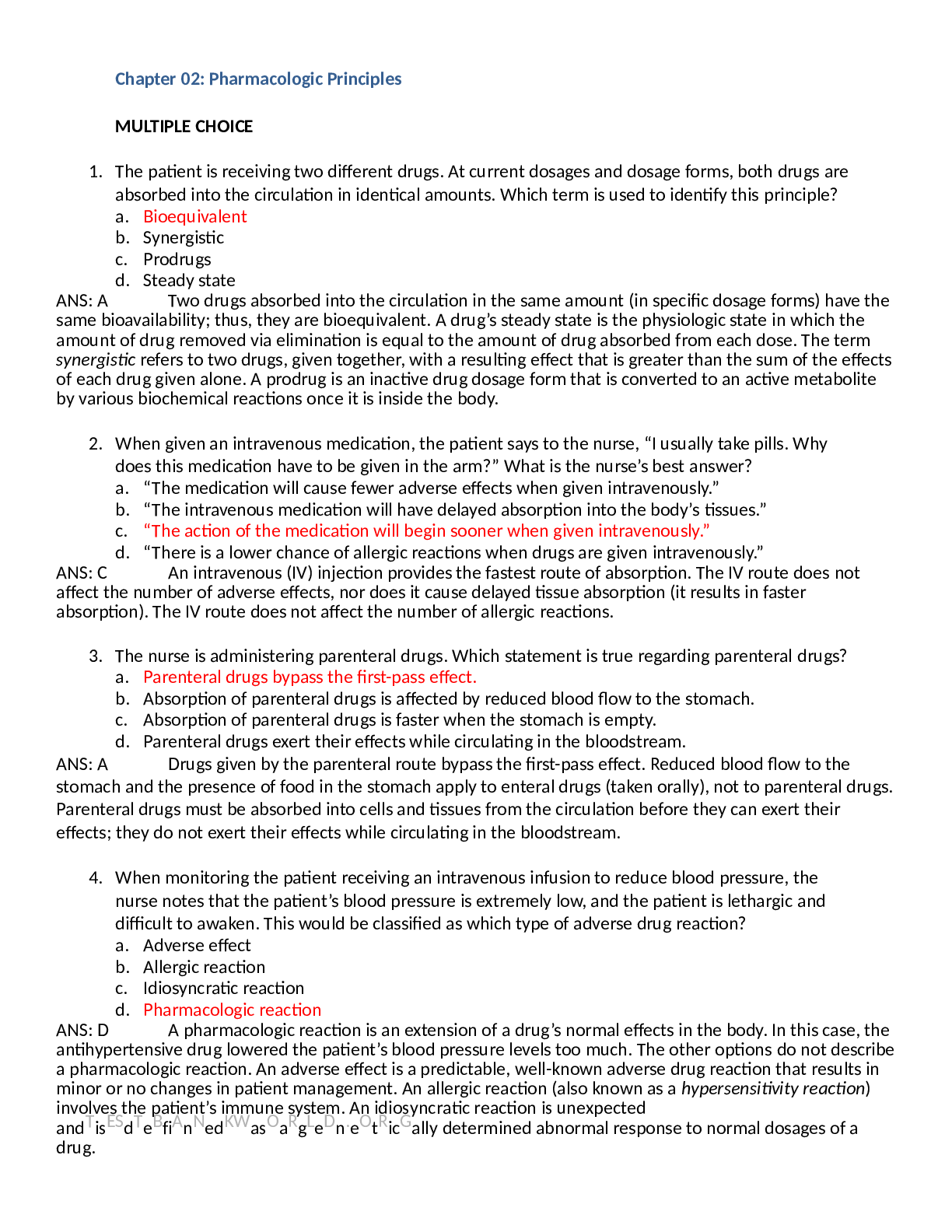
Buy this document to get the full access instantly
Instant Download Access after purchase
Add to cartInstant download
Reviews( 0 )
Document information
Connected school, study & course
About the document
Uploaded On
Oct 24, 2022
Number of pages
39
Written in
Additional information
This document has been written for:
Uploaded
Oct 24, 2022
Downloads
0
Views
100


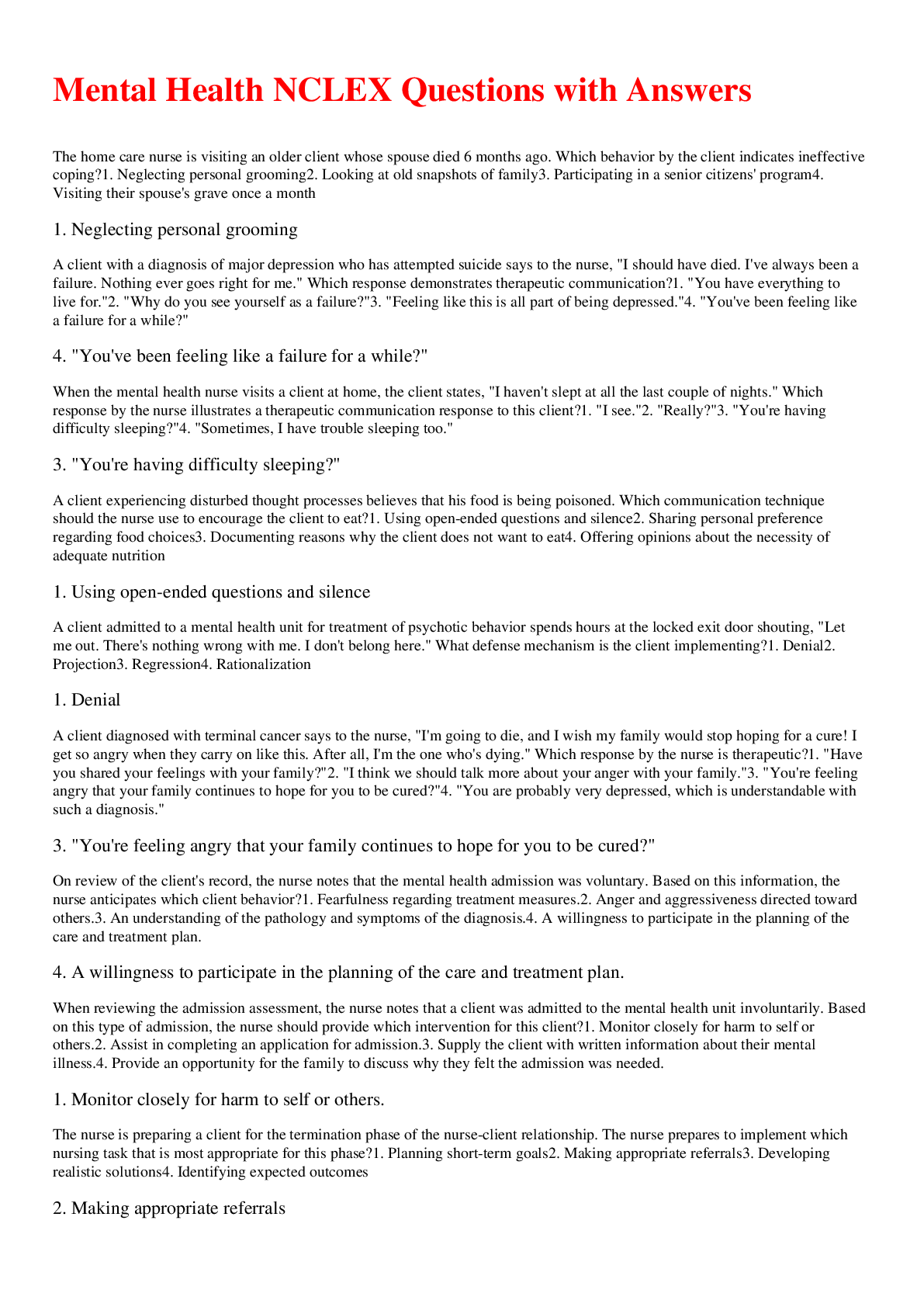


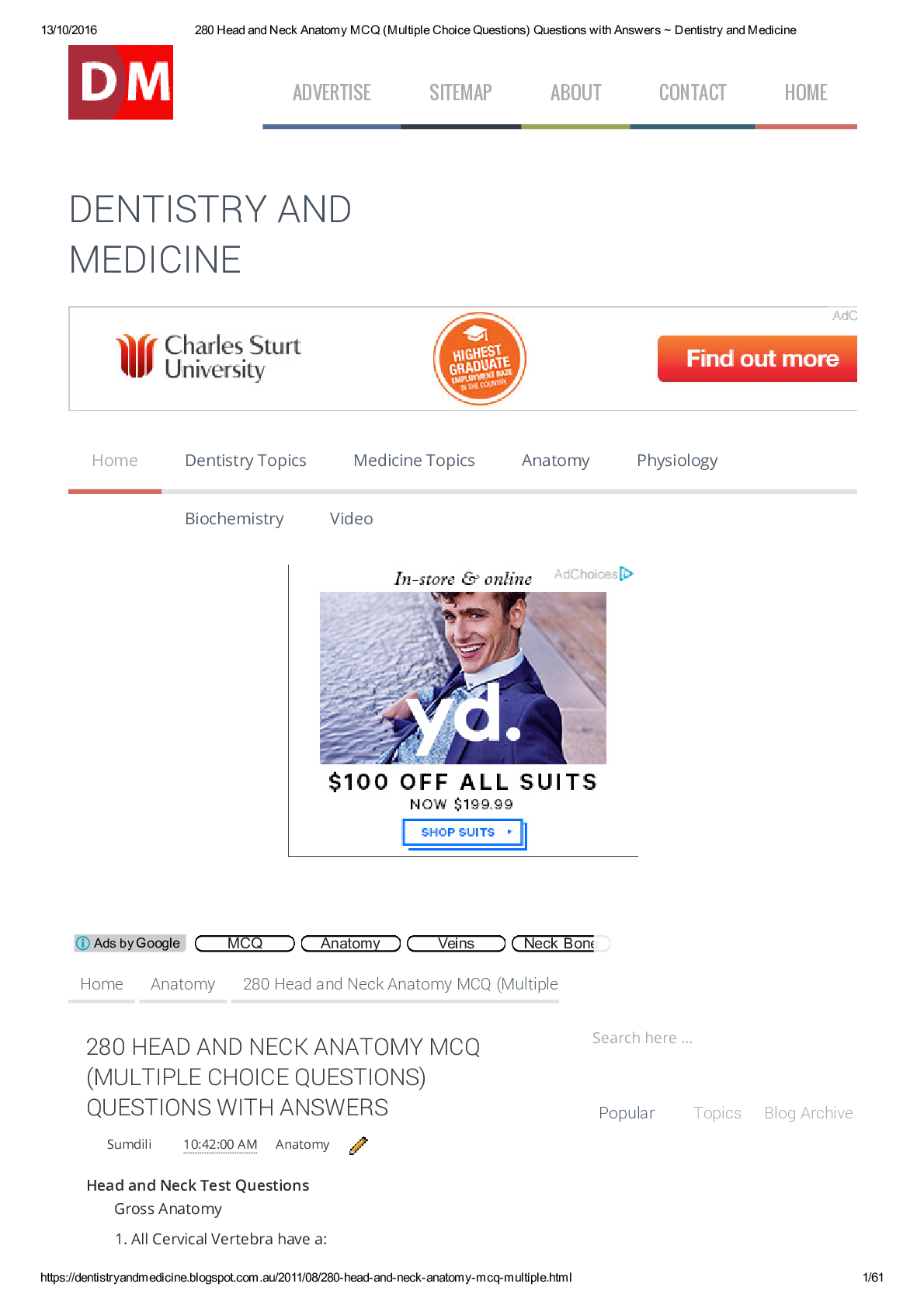


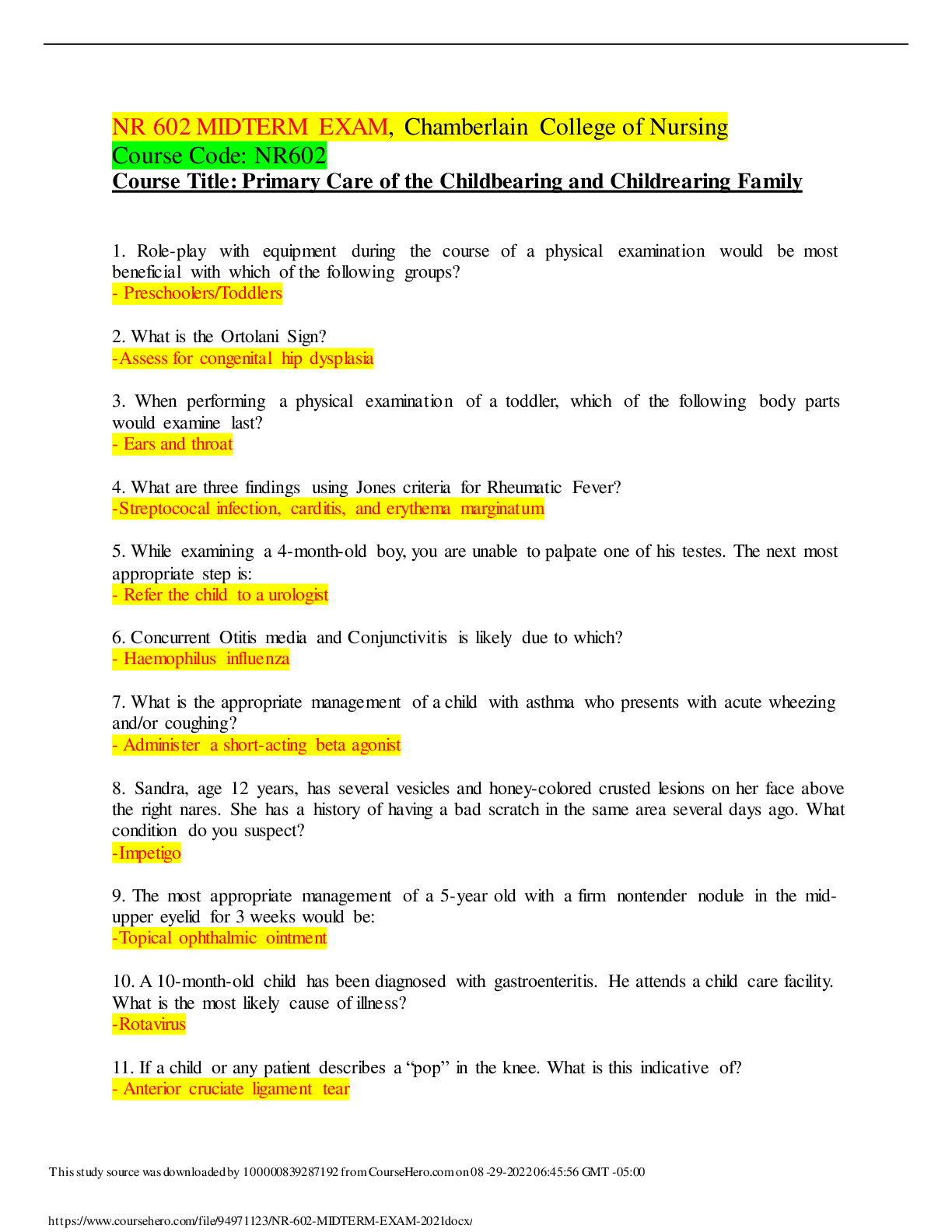
.png)

